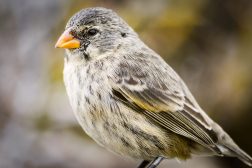Definition
noun
Fish tapeworm that infests the intestine of its mamalian (including human) host
Supplement
Diphyllobothrium latum belongs to the genus Diphyllobothrium, which in turn belongs to the class Cestoda (tapeworm). D. latum causes diphyllobothriasis in its human host. Infection in humans is usually by eating uncooked fish. The larval stage is known as sparganum. It occurs in Scandinavia, western Russia, and the Baltics. It is regarded as the longest human tapeworm, reaching about ten to twelve meters long. As a tapeworm, the adult D. latum has three major body parts: the head or scolex, the neck, and the proglottids. The scolex lacks hooks and has slit-like grooves called bothria that run longitudinally. The worm uses bothria to attach to the wall of the intestine. The neck serves as the proliferative region that gives rise to new proglottids. The proglottids contain the reproductive organs (and therefore involved in sexual reproduction). The species is hermaphrodite, which means it carries both sets of sex organs and therefore is capable of self-fertilization.
D. latum is whitish or yellowish in color and is dorso-ventrally flattened. The adult worm in the gut feed through the skin (tegument). They absorb nutrients from food digested in the intestine. They lack oral opening.
Scientific classification:
- Kingdom: Animalia
- Phylum: Platyhelminthes
- Class: Cestoda
- Subclass: Eucestoda
- Order: Pseudophyllidea
- Family: Diphyllobothriidae
- Genus: Diphyllobothrium
- Species: D. latum
Common names:
See also:







